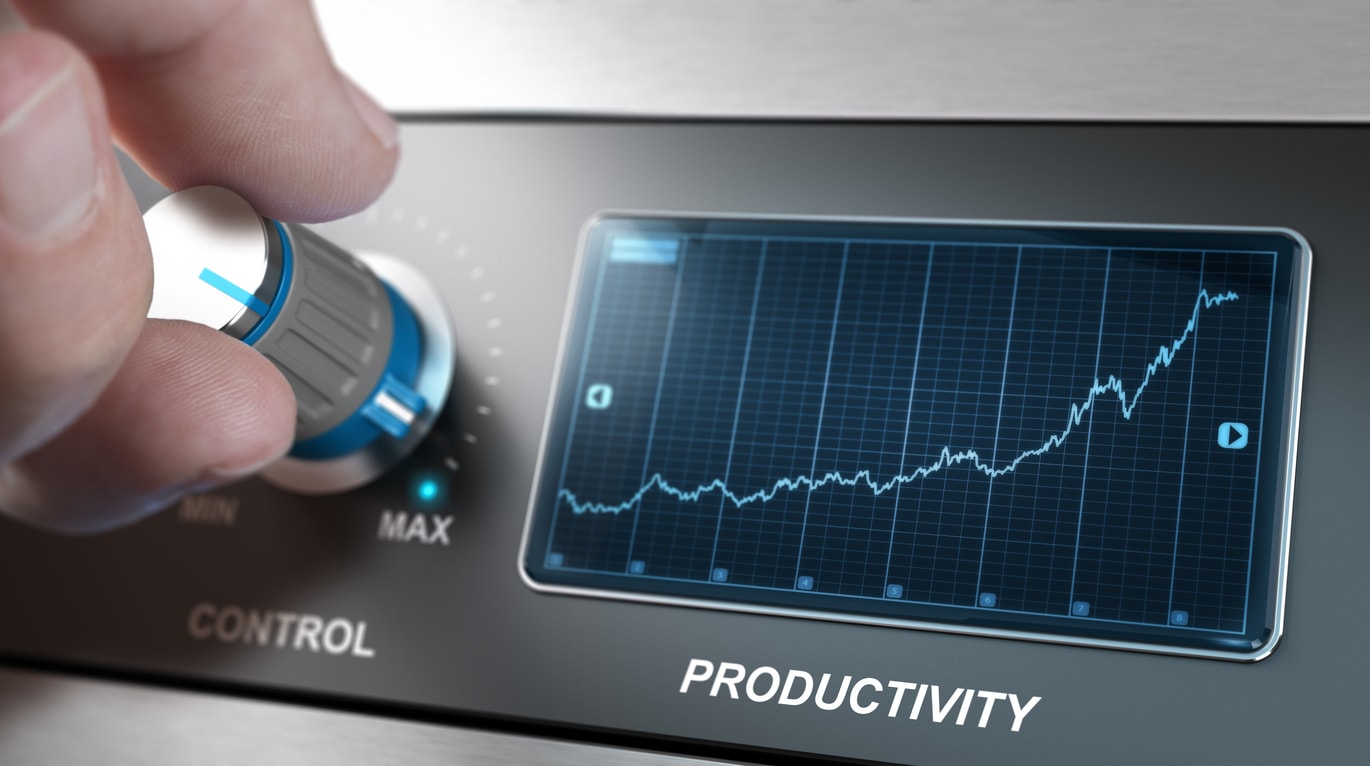
I recently wrote about a very powerful idea called systems thinking, a revolutionary mindset that puts you in the driver’s seat for your future and empowers you to achieve any goal. By manipulating the mechanics of the systems in your life, you can influence the outputs that they create. These systems are both independent and interdependent, meaning that they function in isolation but are influenced by inputs from other systems around them. In other words, your entire life is a “system of systems” and understanding how the systems work is critically important if you want to create your ideal future.
Because your life is a system, it can be broken down, analyzed, and improved upon. You’re about to find out a really simple framework to improve your “life system” and make it more productive. In this post, we’re going to show you the 5 essential tools you need to stay on top of everything you need to do and start taking action on your goals.
Let’s start with a hypothetical (but possibly real) situation. At the moment, your life “just happens” – you go to work, you eat, you spend time with your significant other, and you vaguely remember watching TV every now and then, but mostly, it’s just a blur. Life comes at you so fast that you’re stressed out about what you might be forgetting. You have too many things to do, and not enough time to do them in. You are constantly overwhelmed, and trying to figure out how to regain control of your chaotic life:
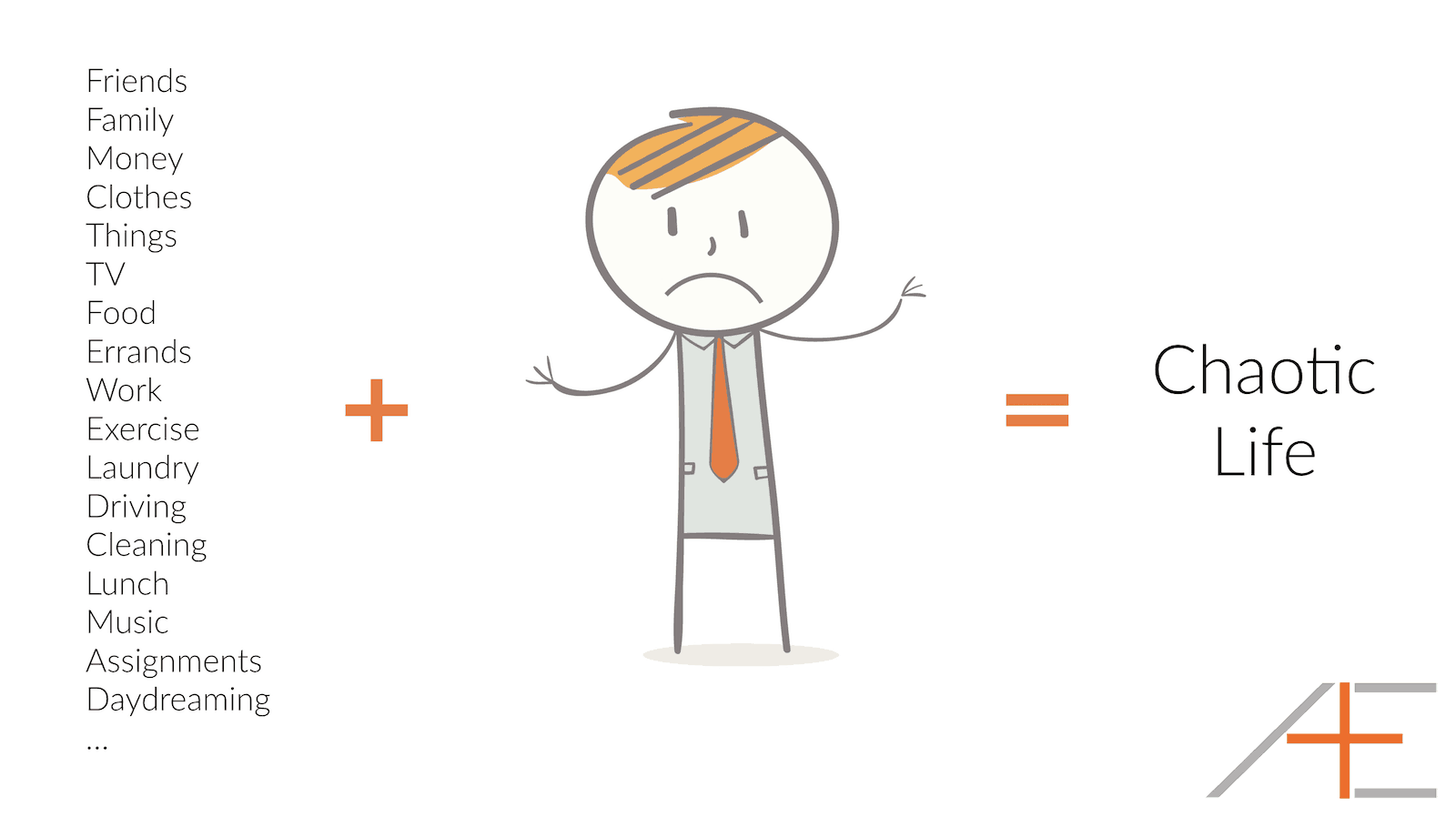
That frantic feeling you feel all the time is a direct result of your system. Since the inputs are fairly constant (you’re not going to walk away from your job tomorrow), how can you change your results?
By adding some productivity tools to the mix and changing your processes.
Here at Asian Efficiency, we have multiple productivity experts from a variety of backgrounds who have just about seen it all. We’ve worked with thousands of people to solve their productivity problems and help them regain a sense of calm and control over their situation. So we know what works – no matter what you may be facing. Whenever we start working with someone, we immediately look to see if their personal productivity system includes these 5 things. If any of them are missing, the addition of these tools & processes usually brings instant relief. These 5 essential building blocks of a personal productivity system are absolutely critical. You must have these if you want to gain control over your time, attention, energy, and focus and make progress on your goals.
Let’s break them down individually.
#1: Calendar
First is a calendar. The calendar gives you visual representation of how you intend to spend your time. The calendar charts the course for your day and it provides intentional direction for your actions. Life may not go exactly according to plan, but if you go into your day with a plan you have a much better chance of your day being a good one.
You must be very careful about what goes on your calendar. Reserve your calendar for the things that are important to you. Here are some of the things we recommend you put on your calendar:
- Appointments (dentist, classes, dinner with friends, meetings, etc)
- Deadlines (handing in report, filing taxes, etc)
- Events (pay day, birthdays, holidays, package arrival, etc)
- Time sensitive errands (buying something before store closing time)
- Focus time (when you set time aside to work on something important and no one can disturb you)
Remember, your calendar is sacred ground. Nothing goes on your calendar unless it meets the following criteria:
- You absolutely must do it, and
- It’s time sensitive.
If it doesn’t meet these criteria, don’t put it on your calendar.
#2: Time Tracker
The second essential tool is a time tracker. There’s a little bit of debate internally at AE about how important this is, but I personally believe that if you want to improve how you spend your time you must know how you are currently spending your time. That’s exactly what a time tracker gives you. Time tracking shows you how you actually spend your time, not how you think you spent your time (and sometimes there’s a significant difference).
“If you can not measure it, you can not improve it.” – Lord Kelvin
But what’s the big deal? If you waste some time, is it really that bad? For me, it is. Time is the one resource we can never get more of. We all have the same 24 hours in the day. What you are able to do with those 24 hours is a result of how well you are able to manage it (along with your energy and focus). At the end of today’s 24 hours, you may have taken massive action on your goals and taken a big step towards your ideal future – or you may have watched 5 hours of Netflix. The choice is yours.
There are different types of time trackers available, but I prefer something Automatica like Timing for Mac. You can use a manual time tracker like Toggl or Harvest, but I often forget to start and stop my timers. I like Timing because it’s automatic (and if you want to save some dough, we have a coupon code inside the Dojo).
Once you have these two tools in place, your life systems are a little better defined and look something like this:
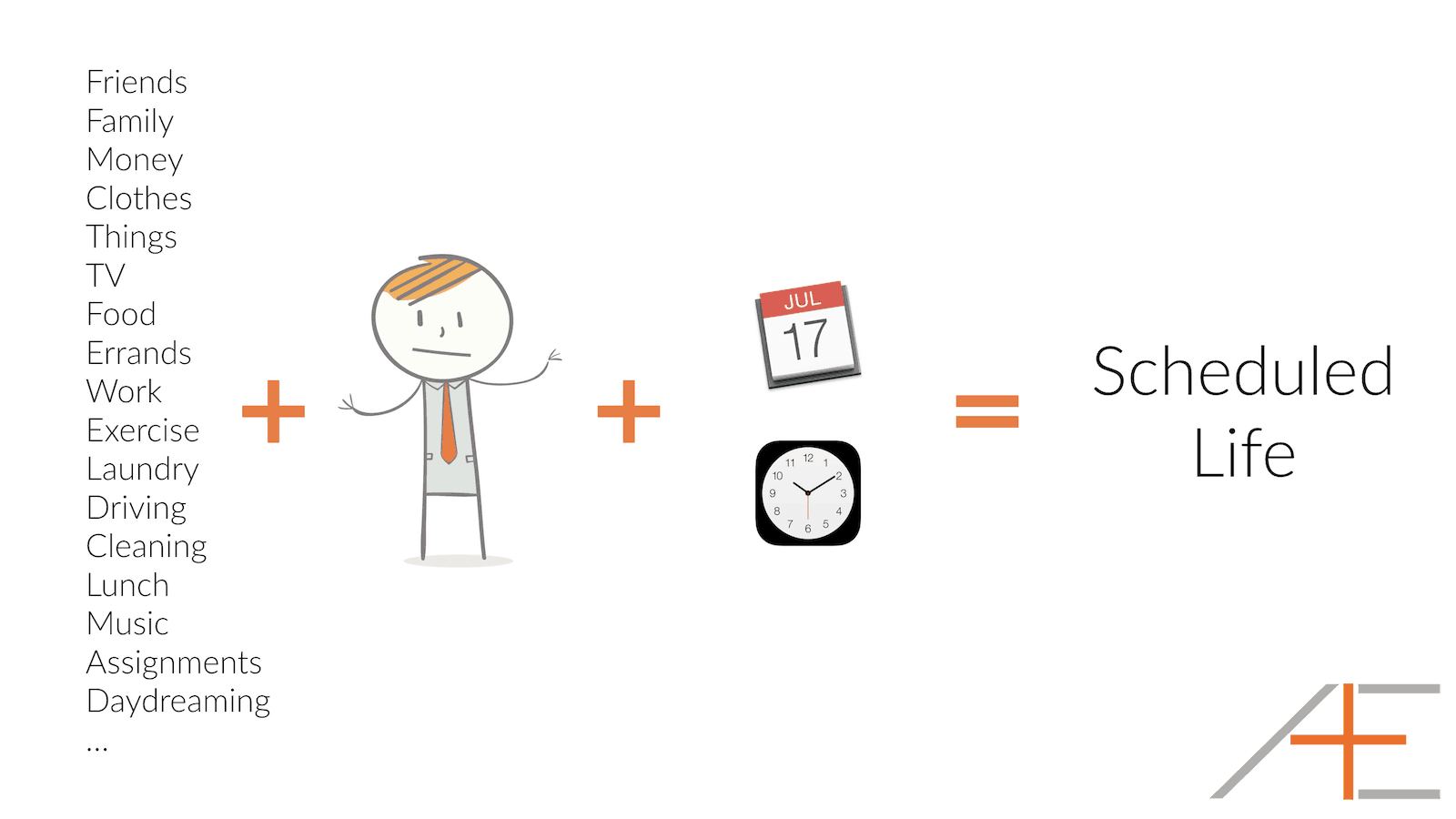
Now you know where your time is going and how it’s being spent (and where it’s being inappropriately spent). You’re not going to forget things like you used to, but you still don’t have much control over your day. Now let’s take a look at tool #3.
#3: Contact Manager
Don’t underestimate this one! In his classic book How to Win Friends & Influence People, Dale Carnegie shares story after story about how becoming genuinely interested in other people can lead to personal and professional success. Technology makes this really easy, but it doesn’t have to complicated – if you prefer, you could use something as simple and analog as a rolodex. You just need something to keep track of your contacts and their personal information (i.e. phone numbers, birthdays, anniversaries, emails, etc.)
“Remember that a person’s name is to that person the sweetest and most important sound in any language.” – Dale Carnegie
Efficiency is great, but it can’t be applied to your relationships. Peter Drucker once said to be efficient with things, but effective with people. A contact manager (our favorite is BusyContacts) helps you be more effective in dealing with people, and is therefore a critical component to your personal productivity system.
#4: Note Taker
You need somewhere to take notes or to jot down ideas when they come. This could be either analog or digital, just make sure you have something always at hand. Personally, I like taking digital notes using nvALT on my Mac and Drafts on my iPhone. But there is a whole community that loves analog tools and the forced constraints they provide. We even have a whole podcast episode devoted to the topic:
Regardless of what you decide to use, make sure that you capture things when they have your attention. Get your thoughts and ideas on the paper and off the mind. A short pencil is better than a long memory.
Now we’re really starting to make some progress! All the random information, people you meet once and tidbits now have somewhere to go. You know where all your important stuff and contacts are when you need to find them.
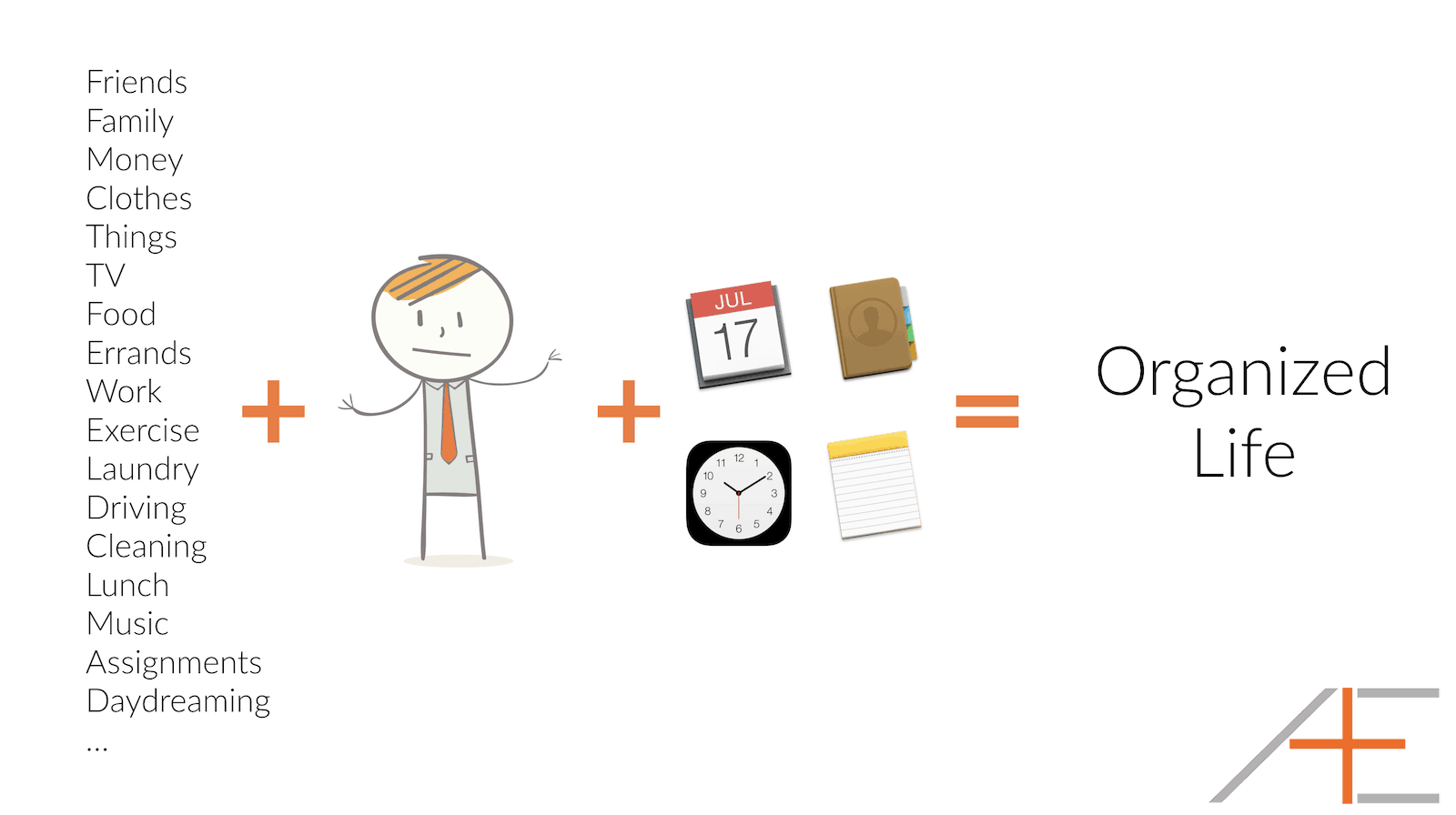
Now you have the tools you need to respond to whatever life throws at you, but you still don’t quite have mastery of your day yet. Let’s take things up a notch and add the last essential personal productivity tool.
#5: Task Manager
You need somewhere to keep all your tasks or things you have to do. There are many different ways to manage everything you need to do, ranging from a simple list using pen & paper to a complex application like OmniFocus. Your needs will vary based on your situation, so if you want to explore this topic further check out the task management need hierarchy I wrote about in this post on simple task management. It does a great job of explaining the complexity costs and benefits of the different task managers out there.
Regardless of which task management solution you decide to use, there are 4 key characteristics to look for:
- It should be easy to maintain (or you won’t use it consistently)
- It should provide a sequential order of tasks (so you know what to do first)
- It should give you the ability to capture new tasks (your life is an open system, remember)
- It should allow you to see what’s appropriate right now and recognize that not everything is immediately actionable
That 4th point is a little bit tricky using paper/pencil, but it is doable. In our opinion though, this is where an application like OmniFocus really shines. You can have 1000 tasks on your list, but OmniFocus can filter everything instantly and show you only the 5 that you should be thinking about right now. That’s pretty powerful.
What a Difference!
After adding all 5 pieces to your personal productivity system, your life probably looks quite different:
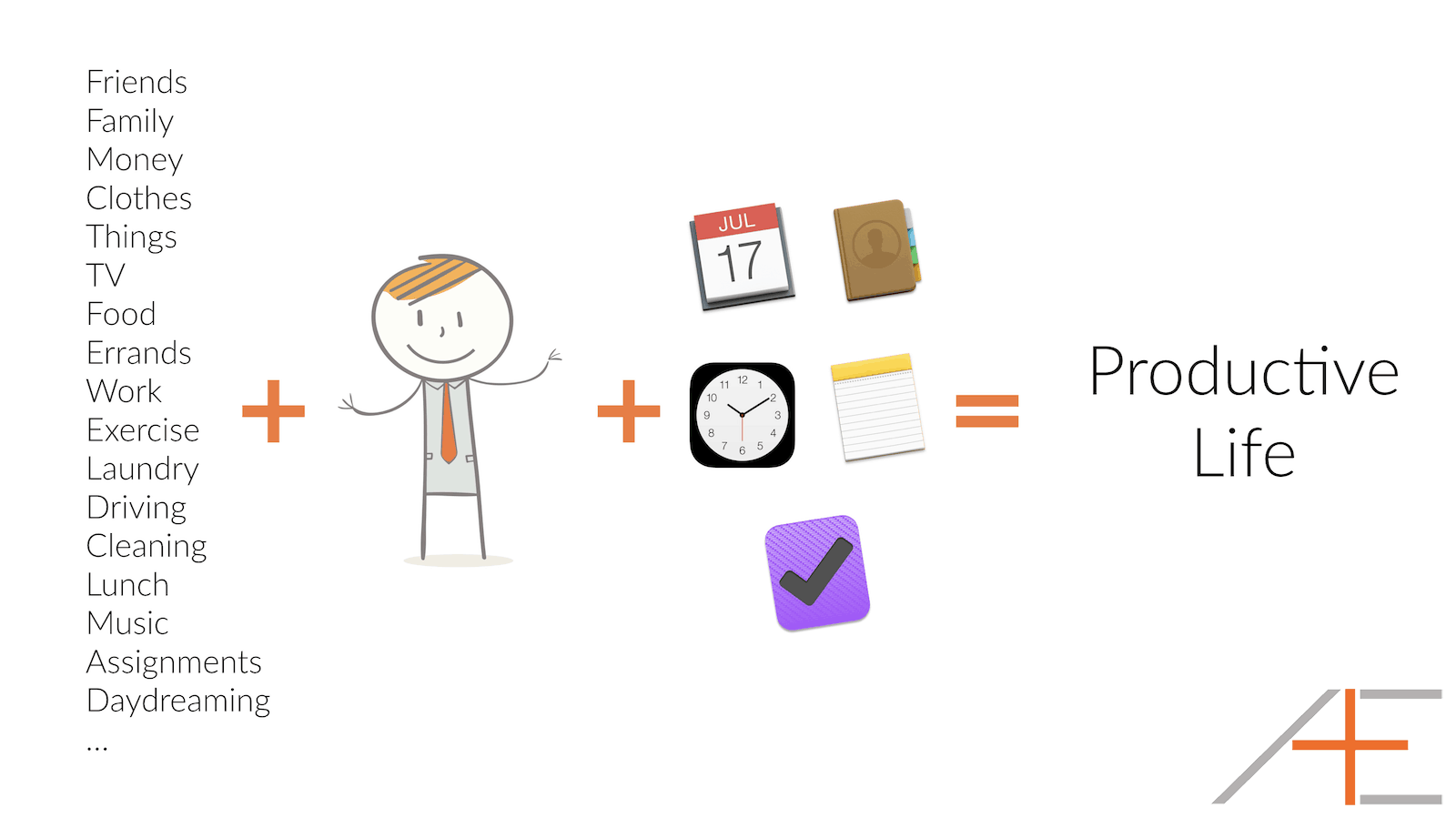
And now we have a sense of priority in what to do, when to do it, and what you need to complete it – these are the basic building blocks of a personal productivity system. Life looks different now. You know that you start the day with a cup of coffee, a read of the morning paper and a 40-minute commute to work. You know that you spend 8ish hours in the office, with a 30-minute lunch break and 30-minute gym break during the day. You know exactly what you have to deliver at work, and in what order. You know that you spend quality family time from 6-9 in the evening, and a couple of hours each night working on your side business and personal projects. You’ve gained the ability to quantify and measure what you’re doing, and you use this as an input for pushing your life towards where you want it to go.
Next Steps
If you’re ready to take your personal systems to the next level, here are some action steps to help you apply this in your own life:
- Do an audit of your personal productivity system. Are all 5 essential tools present?
- If any are missing, identify what apps or tools you are going to use to fill those needs.
- Identify the tool you are using for taking notes. Do you have a way to quickly transfer the information you capture to other tools within your personal productivity system?
If you like this post or want to dive deeper on this topic, check out the Dojo, our online productivity community. The Dojo is full of super-smart, like-minded achievers who have embraced a growth mindset and live and breath this stuff. There is no better place to get feedback on your personal productivity system and get ideas for small improvements that can make your daily workflow even more efficient.
